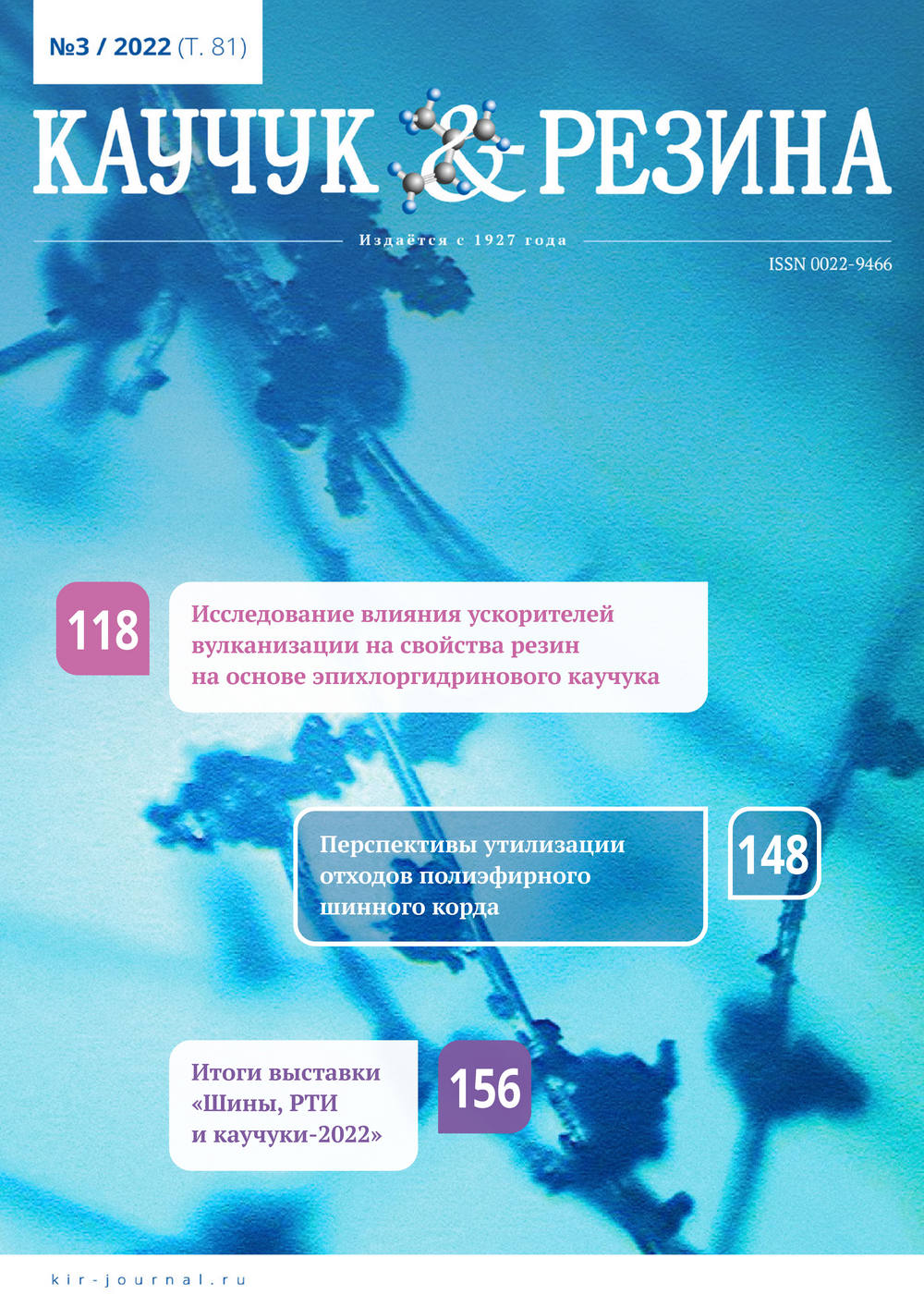Modifiers of Microstructure of Butadiene-Styrene Synthetic Rubber
Published 2022-07-24
How to Cite
Abstract
The processes of development and production of modifiers (M) are described, resulting in the creation of functionalized (FDSSR),. Properties of
this rubber, as well as the properties of two types of M, were considered earlier. The properties and production of additional ones are described.
Two types of M: based on oxypropylated aromatic amines (JSC) and based on oligomers of JSC are under consideration. The use of oligomers
compounds, as well as the introduction of calcium, makes it possible to increase the concentration of mixed alcoholates to 2,5 mol/l and above
and ensure the complete replacement of hydrogen in hydroxyl groups of alcohols with metal. Oligomers of hydroxypropylated toluidine (OAT)
were also studied. The average degree of oxypropylation was 3 and 5 respectively. The use of experimental M of both JSC and OAT together with
n-butyllithium for the synthesis of FDSSR makes it possible to regulate the microstructure of its diene part, as well as the amount of bound
styrene. The use of M containing JSC allows the synthesis of FDSSC of a high (more than 60 %) content of vinyl links, whereas the use of M
based on OAT increases the number of trans links and provides an average value of the number of vinyl links. All FDSRs synthesized using
experimental M are characterized by a higher, on average by 4–5 %, styrene content compared to the industrial analog. Vulcanizates obtained
on the basis of laboratory samples of FDSSC in the presence of the initiating system n-butyllithium/M have a reduced rolling resistance. It has
been established that mixed alcoholates containing dissimilar metals – Na and Са have the best solubility in hydrocarbon solvents. A method
for obtaining them has been developed.

